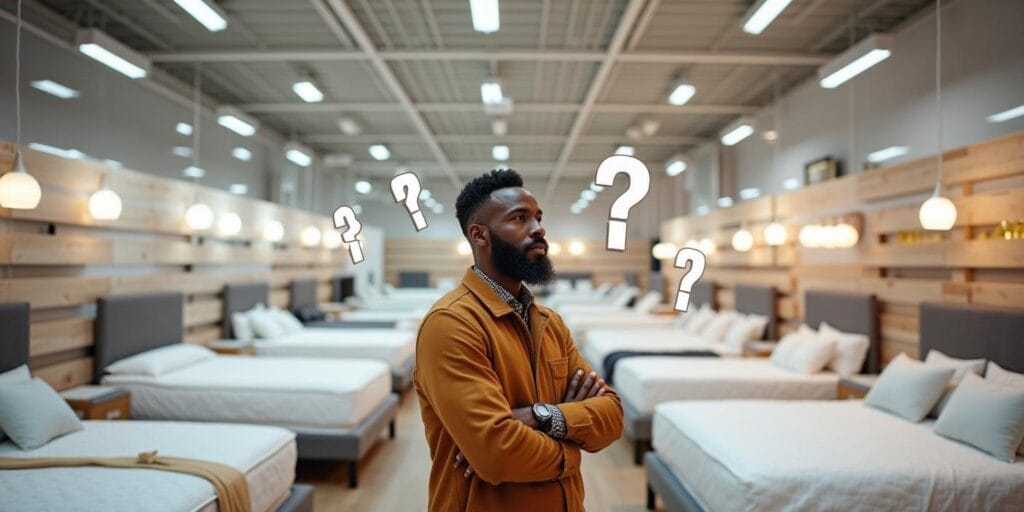
Buying a bed can be a difficult process. Unlike other purchasing decisions, such as trying on a pair of shoes (where fit and personal style are front and centre) or selecting fruit and vegetables (where freshness is key), it can be hard to know what to look for. “Not only do many people not know what to look for in a bed, but they may also find the process of visiting a mattress shop quite intimidating. We’re trying to change that so everyone can enjoy the power of sleep in their lives.”
“Most people have no idea how much technology is inside a modern mattress”
Dale Harley
Dale says many consumers see buying a bed as a grudge purchase whereas it should be viewed as an investment. “You spend a third of your life sleeping and sleep is foundational for good health and performance,” he says. “Investing in a mattress that helps you sleep soundly so you wake up refreshed rather than tired or sore should therefore be a priority. Yet we’ve realised that many people have no idea where to start. They don’t know what makes a good bed, and how to identify what will work for them on the showroom floor.”
Most mattresses have a lifespan of no more than seven to 10 years at most, but your mattress also needs to change with your age and life situation. “What’s comfortable for you as a child will be different to what you need as an adult, and that’s likely to change again as you get older as well as through different life stages, such as marriage, pregnancy, divorce or illness.”
If your mattress is visibly sagging; if you get better sleep on another bed than your own; or if you wake up with aches and pains or struggle to sleep comfortably, it might be time for a new bed.
What you need will be different, depending on whether the bed is for you, for you and a bed partner (whether that’s a spouse or pets), a child, occasional guests, etc. This includes any particular needs. For example, if you’re significantly taller or heavier than the average person, or you have a specific medical need, this may influence which beds best suit your requirements.
Harley says space is also an important consideration here and it’s critical to ensure your bed will fit into the planned space. Standard length for a bed is 188cm, while extra-length beds are 200cm.

Beds are available in a range, from plush to firm, and your preference may be influenced by your sleeping position and size. For example, stomach sleepers may find firmer mattresses more comfortable, while side sleepers may prefer plush mattresses as they allow one’s hips and shoulders to sink into the mattress to keep correct spinal alignment. “Heavier people might benefit from a firmer bed, or from additional support in the centre third of the mattress (available in Restonic’s Marvelous Middle beds),” says Lebo. Read more about mattress comfort options here.
“Most people have no idea how much technology is inside a modern mattress,” says Dale. “Premium mattresses command a higher price because they include specialist comfort layers or materials, or features designed to improve robustness or longevity, or to minimise sag or movement transference. These can all greatly improve your sleep experience and might be worth saving up for when you buy your own bed. But you might also choose to purchase something simpler and more cost-effective if you’re buying a bed for your guest room that won’t be used every night, or if you’re purchasing for a child (as children have that wonderful gift of being able to sleep comfortably almost anywhere).”
For example, if you suffer from allergies, you might be looking for a hypoallergenic bed. If you run hot, you might consider cooling mattress technologies. You might want to consider a foam-encased mattress.
"It’s also important to know whether you want a bed set (mattress and base) or just a mattress, as this will affect price (and potentially the warranty)."
Lebogang Matlou
“If you have any health issues that affect your sleep, it’s worth speaking to your doctor or physiotherapist to get their input before selecting a bed. For example, all Restonic beds are endorsed by the Chiropractic Association of South Africa.”
Dale Harley
Lebo says the best way to find a good bed is to visit a mattress showroom to try out some options. “It might seem awkward to go and lie on a bunch of different beds, but I promise you that’s what the sales staff expect. It’s a key step in finding what works for you,” he says. “Nobody wants to buy the wrong bed, so take your time. Find a few options you like, then look up reviews online before making the final purchasing decision. You can also try to find the beds you like on special. Most retailers will run promotions in January and again for Black Friday, with other special offers in between.”
He advises going mattress shopping wearing something comfortable (not a suit or skirt, which makes climbing on and off beds difficult). “Don’t go when you’re physically tired because every bed will feel good if it’s just a relief to be off your feet,” he says.
To check the “fit” of the bed, lie on your back and slide your hand into the hollow at the bottom of it. If it slides in too easily, the bed might be too hard. If you struggle to fit your hand in, the bed may be too soft. You’re looking for just a slight resistance.